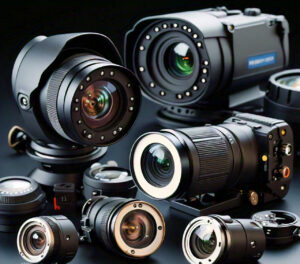
IPC-HFW3241E-AS-S2_S2_datasheet_20240120
When it comes to surveillance cameras, one of the most critical factors to consider is the camera’s ability to detect, observe, recognize, and identify objects or individuals within its field of view. This is where DORI (Detect, Observe, Recognize, and Identify) specifications come into play. In this article, we’ll delve into the importance of DORI specifications in surveillance cameras, using the Dahua IP Camera model DH-IPC-HFW2449S-S-IL as an example.
What is DORI?
DORI is a standard system (EN-62676-4) that defines the ability of a person viewing the video to distinguish persons or objects within a covered area. It’s a measure of a camera’s performance in detecting and identifying objects or individuals at varying distances. DORI specifications are typically provided by camera manufacturers and are essential in determining the camera’s suitability for a particular surveillance application.
The Four Stages of DORI
The DORI system consists of four stages:
- Detect: The camera’s ability to detect the presence of an object or individual within its field of view.
- Observe: The camera’s ability to observe the object or individual, providing a general idea of its shape, size, and movement.
- Recognize: The camera’s ability to recognize the object or individual, providing more detailed information about its features, such as facial recognition or license plate reading.
- Identify: The camera’s ability to identify the object or individual with a high degree of accuracy, often requiring a clear and detailed image.
DORI Specifications in the Dahua IP Camera Model DH-IPC-HFW2449S-S-IL
The Dahua IP Camera model DH-IPC-HFW2449S-S-IL provides DORI specifications for its 2.8 mm and 3.6 mm lenses. The specifications are as follows:
| Lens | Detect | Observe | Recognize | Identify |
|---|---|---|---|---|
| 2.8 mm | 63.6 m (208.66 ft) | 25.4 m (83.33 ft) | 12.7 m (41.67 ft) | 6.4 m (20.99 ft) |
| 3.6 mm | 85.4 m (280.18 ft) | 34.2 m (112.20 ft) | 17.1 m (56.10 ft) | 8.5 m (27.89 ft) |
These specifications indicate that the camera can detect objects or individuals at a distance of up to 63.6 meters (208.66 feet) with its 2.8 mm lens, observe them at up to 25.4 meters (83.33 feet), recognize them at up to 12.7 meters (41.67 feet), and identify them at up to 6.4 meters (20.99 feet). Similarly, with its 3.6 mm lens, the camera can detect objects or individuals at up to 85.4 meters (280.18 feet), observe them at up to 34.2 meters (112.20 feet), recognize them at up to 17.1 meters (56.10 feet), and identify them at up to 8.5 meters (27.89 feet).
Why DORI Specifications Matter
DORI specifications are crucial in determining the effectiveness of a surveillance camera in a particular application. Here are a few reasons why:
- Accurate identification: DORI specifications ensure that the camera can accurately identify objects or individuals, which is critical in applications such as facial recognition, license plate reading, or suspect identification.
- Optimal camera placement: DORI specifications help determine the optimal placement of cameras to ensure that they can detect, observe, recognize, and identify objects or individuals within their field of view.
- System design: DORI specifications are essential in designing a surveillance system that meets the specific requirements of an application, taking into account factors such as camera resolution, lens type, and lighting conditions.
- Cost-effectiveness: By selecting cameras with suitable DORI specifications, users can avoid overspending on cameras that may not meet their specific needs.
Conclusion
In conclusion, DORI specifications are a critical aspect of surveillance cameras, and understanding them is essential in designing an effective surveillance system. By considering the DORI specifications of a camera, users can ensure that they select the right camera for their specific application, resulting in accurate identification, optimal camera placement, and cost-effectiveness